Simple steps to Rotator Cuff Rehabilitation
I recently wrote this post for Medbridge Education when they asked me how I would tackle a general shoulder pain patient with a suspected rotator cuff injury. I hope to outline a simple rotator cuff rehabilitation program that you can use for most shoulder patients that you see in the clinic
You can sign up for my website to get a Medbridge promo code to save up to $175 off of a yearly subscription that gets you unlimited CEU’s! You can see the full article here:
Each day I practice physical therapy, I am reminded that certain structures of the shoulder tend to play just a wee bit more of a critical role than others. That’s not to say that some structures are useless or less important. Because of this, my life can feel like Groundhog’s Day (remember that movie?!) All day, every day I am educating on and improving the integrity of the rotator cuff.
In assessing the rotator cuff in that person standing in front of me, I need to fully understand how it is affecting their ability to lead their normal life. When I say ‘lead a normal life’ I mean: grab a dish, lift their coffee, brush their hair, throw a baseball or any other function.
10 Key factors in Rotator Cuff Rehab
There are so many factors that I need to consider that are almost too numerous to list out….but here’s my attempt:
- age of the patient,
- activity level,
- injury to that shoulder,
- response to previous treatment,
- what the person felt helped them the most,
- imaging and what were the findings,
- past medical history,
- joint status (hypermobile or hypomobile),
- what they think is going on in their shoulder,
- most importantly is the ultimate goal of the client.
As I’m taking a history, all of this is going through my head. As we continue to chat, I have a mental checklist that helps to guide the conversation. This can give me the answers that I need to hone in on a particular diagnosis and a treatment plan.
Once I have formulated a theory about the potential issue and proper treatment strategy, I need to outline the plan that will safely and effectively return the client back to their prior level of function. A critical aspect of my care is to educate on what I think MAY be going on. Then I can give them a home exercise program that won’t overwhelm them.
In my practice at Champion PT and Performance in Boston (www.champ.pt), I only see most of my clients 1x per week or once every other week so the HEP is critical!
What’s the plan?
So what do I do for people presenting with some form of shoulder pain? So many different answers but for the purpose of this blog post, I will keep it simple.
I will outline a generic program that will help restore pain-free ROM, strength, and slowly return them back to their function. In reality, I am constantly tweaking the program based on response to the exercises. Most people certainly don’t take a linear recovery process.
Calm down the shoulder pain
In my acute series, I want to get the shoulder joint moving through self-ROM activities. I like to have the client foam roll their thoracic spine and Lat muscles to help aid overhead mobility. I’ll then have them use a golf club to work on external rotation ROM at 45 degrees and 90 degrees of abduction. Following this, I’ll have them work on shoulder flexion AAROM while supine to get them comfortable with some form of active motion.
For strengthening, I like to begin with isometric activities to help with pain control because numerous studies have shown the analgesic effects (yup in patella tendon patients but let’s extrapolate for now).
Isometric exercise induces analgesia and reduces inhibition in patellar tendinopathy.
Initiate higher level strengthening
Once we get the client feeling better and believe they can progress onto strengthening activities, I like to add isotonic strength training such as band work, full can, sidelying external rotation, prone horizontal abduction, prone extension and prone full can. Numerous studies have shown the EMG activity of the rotator cuff and scapula stabilizers to be relatively high with most of these activities.
Because of that, I like to add all of these to a program. I will change the weights, sets and rep schemes for each exercise based on their tolerance while I see them performing. A periodized approach is critical and more details may be in a future blog post so stay tuned but always keep this concept in mind. I will very rarely have my clients perform 3 sets of 10 repetitions. The goal of the exercise needs to be fully understood in order to prescribe it correctly.
Advanced strengthening
Once an adequate base of strength is achieved and the exercises are constantly being progressed, I will add higher level strength training for the shoulder and surrounding muscles. Depending on the situation and the athlete presenting in front of me, I will focus on higher level strength training to maximize strength and underlying power production.
Plyometric strength training is incorporated to allow the athlete to produce and dissipate a force. This may include medicine ball chest passes, overhead throws, and rotational throws, amongst many others.
Pull-ups, push-ups, bench pressing and overhead pressing are also added. This is to make sure the athlete is strong in multiple planes and can withstand the forces that will be generated when they get back to their normal function.
Well, maybe not this aggressive!
Return to Sport Program
Finally, I like to outline a gradual return to sports program. To me, the key is knowing the ultimate goal of the athlete and working backward so I can come up with a program that is time-based and highlights important milestones in the process.
For example, in my baseball niche, I begin by having the athlete toss from 30 feet then progress them out to approximately 150 feet. I tend to avoid throwing from further than 220 feet at this point because of the stresses on the shoulder and elbow that ASMI published recently here.
If they can get out that far, then I begin doing pulldowns. A pulldown is when they throw more on a line and with full effort to continually work on arm strength.
If this goes well, then I will begin a mound program and slowly add fastball effort and increase the number of throws over a period of weeks. Gradual mound progressions can take weeks to months, depending on the situation and the goal of the athlete (and the timing of the season!).
Final Rotator Cuff Thoughts
There are many variables that need to be considered when returning a patient back to their highest functional level when they have a rotator cuff injury. It starts with a well thought out and thorough subjective. I can’t stress how important it is to connect with the patient from the 1st visit. We must continually assess and adjust as they report back to you.
This post was my attempt at outlining a very general program for an athlete with a rotator cuff issue. It is by no means the only way to rehab a patient with a shoulder injury. It may be a good starting point to begin to build that program for that person standing in front of you someday. Remember, listen to their issues…they may just tell you what program is best for them!
References for above paragraph:
Reinold MM, Macrina LC, Wilk KE, et al. Electromyographic Analysis of the Supraspinatus and Deltoid Muscles During 3 Common Rehabilitation Exercises. J Athl Train. 2007;42:464-469); (Reinold MM, Wilk KE, Fleisig GS, et al. Electromyographic analysis of the rotator cuff and deltoid musculature during common shoulder external rotation exercises. J Orthop Sports Phys Ther. 2004;34:385-394
Uhl TL, Carver TJ, Mattacola CG, Mair SD, Nitz AJ. Shoulder musculature activation during upper extremity weight-bearing exercise. J Orthop Sports Phys Ther. 2003;33:109-117
Uhl TL, Muir TA, Lawson L. Electromyographical Assessment of Passive, Active Assistive, and Active Shoulder Rehabilitation Exercises. PM R. 2010;2:132-141
Hintermeister RA, Lange GW, Schultheis JM, Bey MJ, Hawkins RJ. Electromyographic activity and applied load during shoulder rehabilitation exercises using elastic resistance. Am J Sports Med. 1998;26:210-220


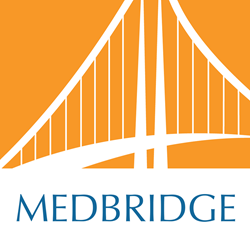

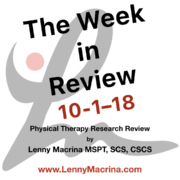
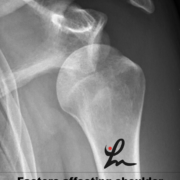

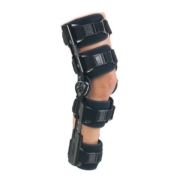

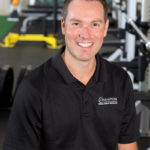

Leave a Reply
Want to join the discussion?Feel free to contribute!